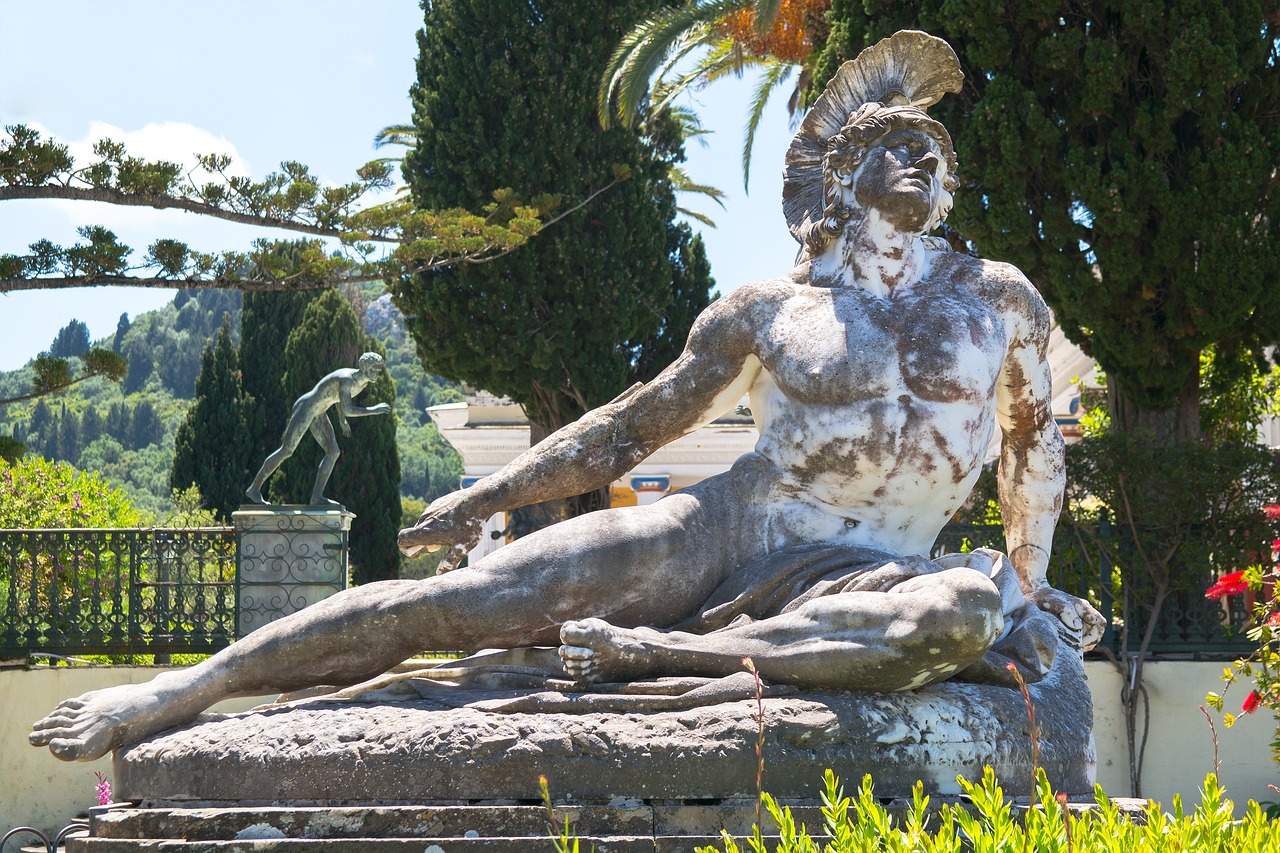Achilles, the legendary warrior of ancient Greek lore, stands out as one of the most celebrated heroes of mythology. Renowned for his immense strength, bravery, and unwavering loyalty, he bore a singular vulnerability known as his “Achilles heel.” The epic narrative of his life, particularly during the final phase of the Trojan War, is vividly illustrated in Homer’s masterpiece, the Iliad.
Achilles: A Complex Beginnings
Achilles’ origin story is intertwined with a rich tapestry of family history typical for many mythic heroes. His father, Peleus, was the mortal king of the Myrmidons, a group renowned for their extraordinary valor and military prowess. His mother, Thetis, belonged to the Nereids, sea nymphs of great beauty. Fearful of her son’s mortality, Thetis sought to grant him immortality through various means. According to myth, she burned him each night and then healed his wounds with divine ointment. Ultimately, she submerged him in the River Styx, which bestows invulnerability, yet she grasped him tightly by his heel, leaving that one spot unprotected. Thus, Achilles emerged nearly invulnerable, save for his heel.
At the age of nine, a prophecy foretold that Achilles would meet his end in a valiant confrontation against the Trojans. To avert this fate, Thetis disguised her son as a girl and concealed him on the island of Skyros. Nevertheless, destiny compelled Achilles to embrace his warrior fate, and he ultimately aligned himself with the Greek forces preparing for war against Troy.
When the Iliad was composed around 720 B.C.E., audiences already recognized Achilles as a formidable hero, renowned for his enchanting looks, supernatural strength, and unmatched bravery. Homer, however, presented a more intricate character—the Achilles portrayed was also vengeful and prone to fury, displaying a petulance when thwarted. Nevertheless, his loyalty was unyielding, and he would go to great lengths for those he held dear.
The Catalyst of War
The Trojan War, as legend dictates, originated from the machinations of Zeus, who sought to diminish the human population through a glorious conflict between the Greeks—whom Homer refers to as the Achaeans—and the Trojans. This was set into motion during Peleus and Thetis’s marriage feast, where Zeus invited the Trojan prince Paris to resolve a competition among goddesses Hera, Athena, and Aphrodite. Each goddess wooed Paris with extravagant offers, but it was Aphrodite’s promise of the most beautiful woman, Helen, that ultimately swayed him. Unfortunately, Helen was already wed to Menelaus, the Spartan king. Encouraged by Aphrodite, Paris abducted Helen, triggering Menelaus’s furious vow for retribution.
The king of Sparta rallied a coalition of Greece’s finest warriors, including Achilles and his Myrmidons, to reclaim his wife and besiege Troy. Homer depicts this monumental struggle as a brutal conflict spanning ten long years.
The Iliad’s Focus
When the Iliad opens, the Greeks have endured nine years of grueling warfare, and Achilles has emerged victorious in numerous encounters. His prowess has given him an undefeated record, yet the fighting has reached an impasse. The narrative transitions from the battlefield to a personal conflict between Achilles and Agamemnon, the commander of the Achaean legions and brother to Menelaus. Agamemnon had, prior to the events of the poem, claimed a young Trojan woman, Chryseis, as war prize. When her father, a priest of Apollo, attempted to ransom her, Agamemnon not only rebuffed him but incurred Apollo’s wrath, resulting in a devastating plague among the Greek forces.
Desperate to save his men, Agamemnon reluctantly restored Chryseis to her father but demanded the Trojan princess Breseis, which incited Achilles’ fury. He withdrew from battle in protest, taking his men with him and leaving the Greek army vulnerable.
With Achilles absent, the tides of war shifted in favor of the Trojans, leading to continuous defeats for the Greeks. In an effort to resolve the impasse, Achilles’ beloved companion Patroclus convinced him to lend his armor, allowing him to fight under the guise of Achilles. This deception yielded initial success until Apollo intervened, empowering Hector to slay Patroclus, thus igniting Achilles’ thirst for revenge.
Retribution and Tragedy
Determined to avenge his fallen friend, Achilles sought divine assistance from Hephaestus to forge weapons that would protect him in combat. He mounted a relentless pursuit of Hector, cutting down Trojans along the way. Upon reaching the walls of Troy, Hector attempted to negotiate, but Achilles, fueled by rage, killed him and subsequently desecrated his body by dragging it behind his chariot back to the Achaean camp. In a rare moment of compassion, however, Achilles later returned Hector’s remains to his father for a dignified burial.
The Legend of Achilles’ Downfall
While the Iliad concludes without detailing Achilles’ ultimate fate, subsequent legends and references within the Odyssey hint at his return to Troy for further vengeance after Hector’s funeral. However, as fate would have it, the vengeful Apollo guided an arrow from Hector’s brother Paris, striking Achilles in the only vulnerable spot his mother had unintentionally left: his heel. Thus, the once-indomitable warrior fell, undefeated in battle yet succumbing to the fatal flaw of his legendary vulnerability.



